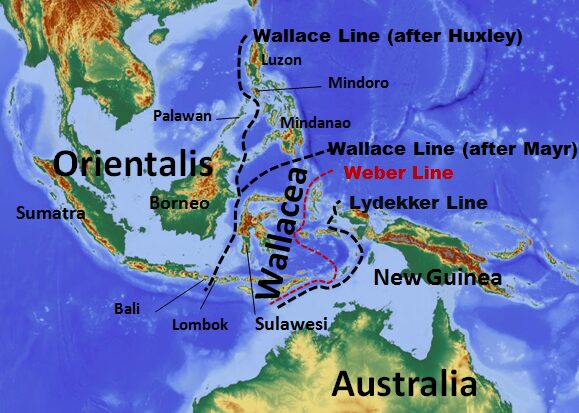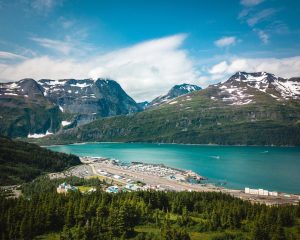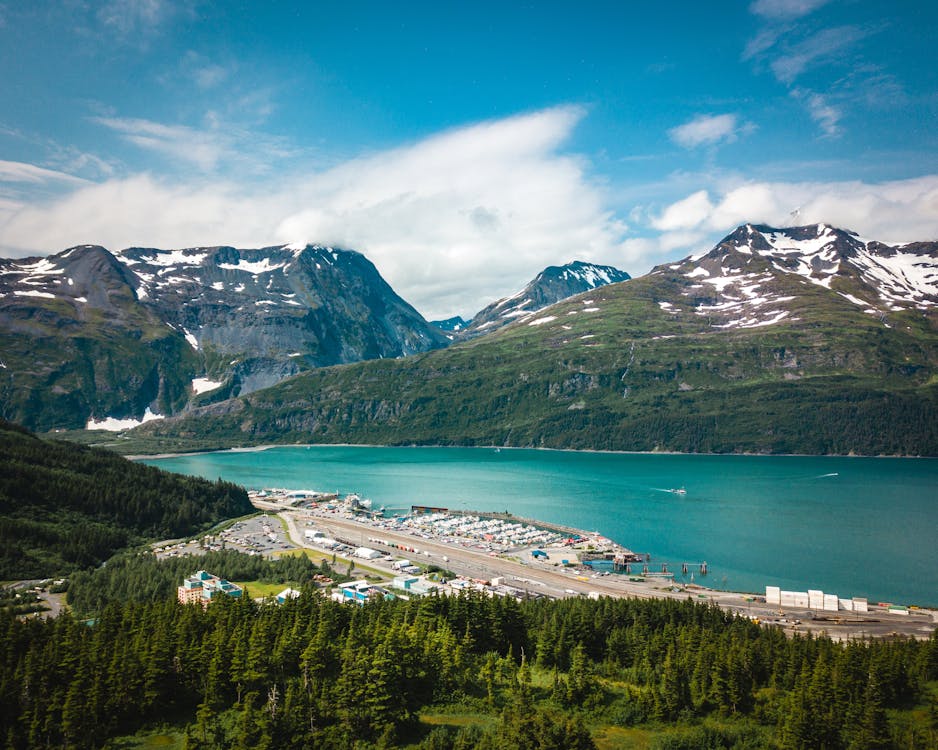
In the heart of the Indo-Australian Archipelago lies a subtle yet profound boundary known as the Wallace Line. First proposed in 1859 by British naturalist Alfred Russel Wallace, this imaginary line demarcates a significant biogeographical division between the distinct faunal regions of Asia and Australia. Despite the close proximity of the islands it separates, the Wallace Line represents a formidable barrier to species migration, resulting in stark contrasts in biodiversity on either side.
A Discovery Rooted in Observation
During his extensive explorations of the Malay Archipelago in the 19th century, Wallace observed a curious pattern: islands situated just a short distance apart harbored vastly different animal species. For instance, while the island of Bali (west of the line) featured fauna characteristic of Asia, neighboring Lombok (east of the line) was home to species more akin to those found in Australia. This observation led Wallace to propose the existence of a faunal boundary, later named the Wallace Line by biologist Thomas Henry Huxley.
Geographic Path of the Wallace Line
The Wallace Line traverses the Indonesian archipelago, running between Borneo and Sulawesi, and between Bali and Lombok. It continues southward, passing between the islands of Java and Flores, and extends east of the Philippines. This line delineates the western islands, which are part of the Asian continental shelf (Sunda Shelf), from the eastern islands, associated with the Australian continental shelf (Sahul Shelf).
Biodiversity on Either Side
To the west of the Wallace Line, the fauna is predominantly Asian, featuring species such as tigers, elephants, and primates. In contrast, the eastern side boasts Australian-type species, including marsupials like kangaroos and monotremes such as the echidna. Bird species also exhibit this division; for example, cockatoos are primarily found east of the line, while hornbills are common to the west.
Interestingly, some islands near the Wallace Line, like Sulawesi, exhibit a mix of both Asian and Australian species, highlighting the complex biogeographical interactions in this transitional zone.
Whittier, Alaska: The Town Where Everyone Lives Under One Roof
Geological and Climatic Influences
The stark biogeographical differences across the Wallace Line are attributed to historical geological and climatic factors. During the Pleistocene epoch, lower sea levels connected many of the islands to their respective continental landmasses, facilitating species migration. However, deep-water channels like the Lombok Strait remained submerged, preventing the mixing of Asian and Australian fauna.
Recent studies suggest that climatic factors, such as precipitation patterns, also played a role in shaping species distributions across the Wallace Line. Species adapted to specific climatic conditions may have been unable to cross into regions with differing environments, further reinforcing the boundary’s impact on biodiversity .
Conservation Significance
The Wallace Line underscores the importance of understanding biogeographical boundaries in conservation efforts. Regions near the line, such as Wallacea, are rich in endemic species but face threats from habitat destruction and climate change. Recognizing the unique biodiversity on either side of the Wallace Line is crucial for developing targeted conservation strategies to preserve these distinct ecosystems.
In essence, the Wallace Line serves as a testament to the intricate interplay between geography, climate, and evolutionary history in shaping the natural world. Its discovery not only advanced the field of biogeography but also continues to inform contemporary conservation practices.
Images: Wikipedia








